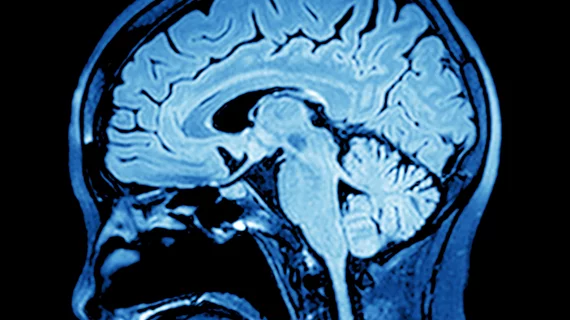7T MRI tracks lesion progression in MS, but is it clinically feasible?
High-strength 7T MRI can better track cortical brain lesions and play a crucial role in evaluating the progression of multiple sclerosis (MS), according to an April 9 study published in Radiology.
Researchers used a 7-Tesla MRI scanner—twice the strength of conventional MRIs—to follow 20 relapsing/remitting MS patients, 13 with secondary/progressive MS and 10 healthy controls from 2010 to 2016. The group used a 7T scanner because traditional 3T MRIs aren’t able to visualize cortical lesions.
The results showed 81% (25 participants) of MS patients involved in the study developed new cortical lesions per year; on average more than twice the number of newly developed lesions in the brain’s white matter. The 7T MRI detected lesions more frequently than lower-field scanners used in previous studies, reported senior author Caterina Mainero, MD, PhD, from the Athinoula A. Martinos Center for Biomedical Imaging at Massachusetts General Hospital in Boston, and colleagues.
"Because 7T MRI is more sensitive to cortical lesions than lower-field MRI, we can detect many of these lesions that we couldn't see before and determine if they are strongly correlated with neurological disability and disease progression," said study senior author Caterina Mainero, MD, PhD, from the Athinoula A. Martinos Center for Biomedical Imaging at Massachusetts General Hospital in Boston, in a prepared statement. "In this study, we wanted to track the evolution of these lesions and better understand where in the cortex these lesions develop more frequently."
Those lesions tended to develop in grooves on the brain’s surface called sulci. In that region, the flow of cerebrospinal fluid is likely to be restricted and make the sulci more apt to experience inflammation, the authors hypothesized.
"This approach adds another piece to the puzzle of understanding MS," Mainero concluded.
Because of the results of this, and previous studies, Massimo Filippi, MD, and Maria A. Rocca, MD, both with the Institute of Experimental Neurology, San Raffaele Scientific Institute, Vita-Salute San Raffaele University in Milan, Italy, argued in a related editorial that reducing the formation of cortical lesions should become a goal of MS treatment.
However, the pair questioned whether 7T MRI is clinically feasible.
“Ultra-high–field-strength imaging at 7-T remains technically challenging and too expensive for large-scale deployment, the authors wrote. “However, it is of paramount importance to develop clinically feasible imaging protocols that can reliably detect these lesions to translate research findings into the clinical arena.”

